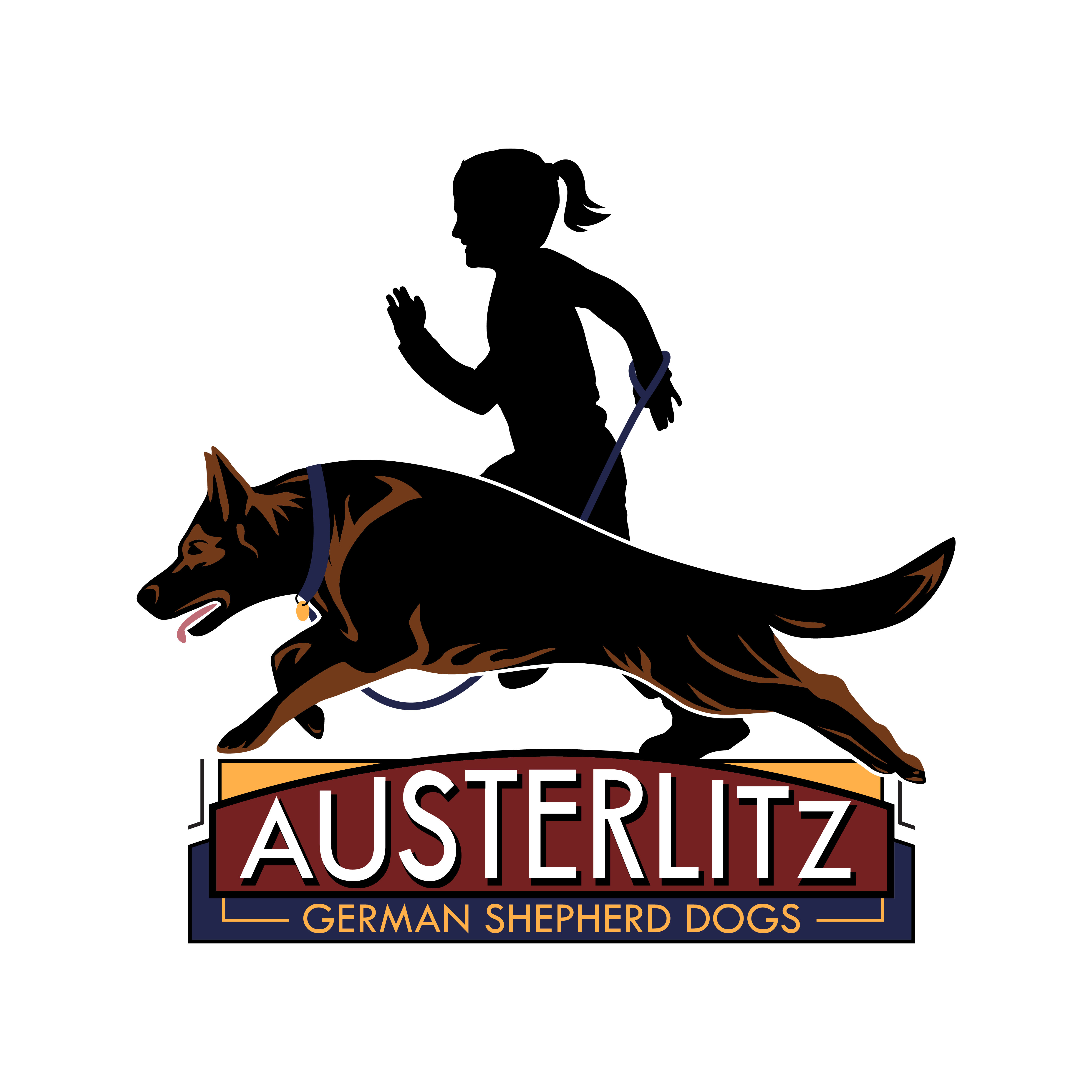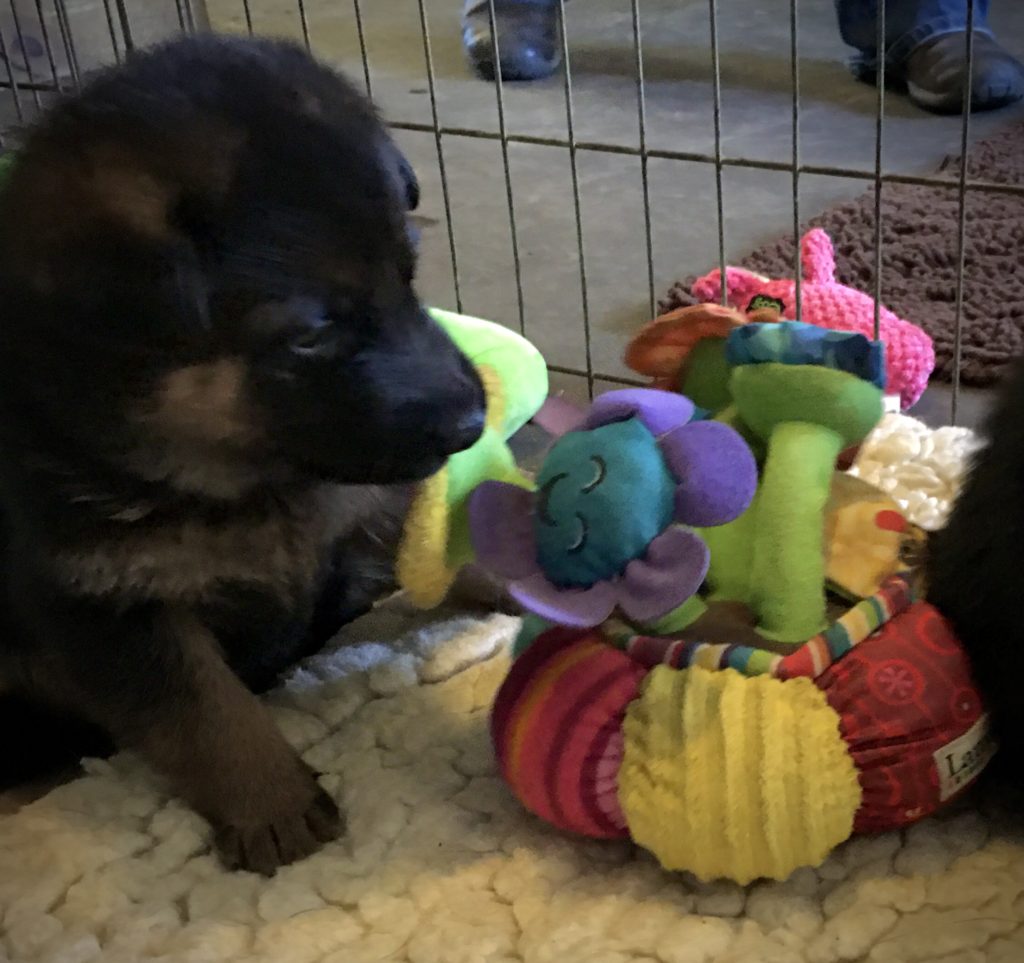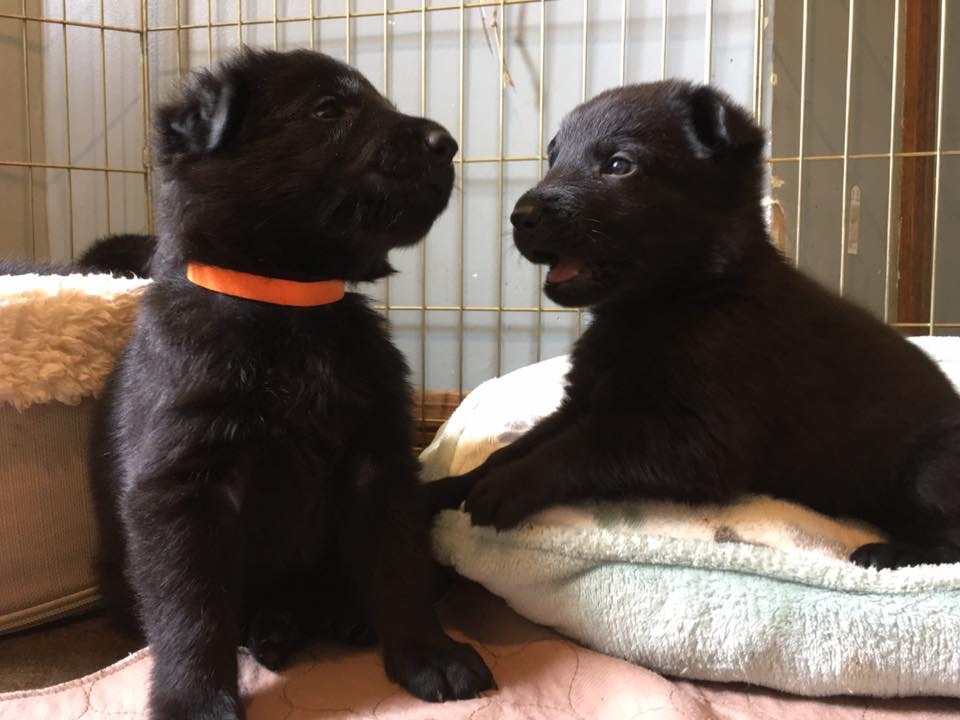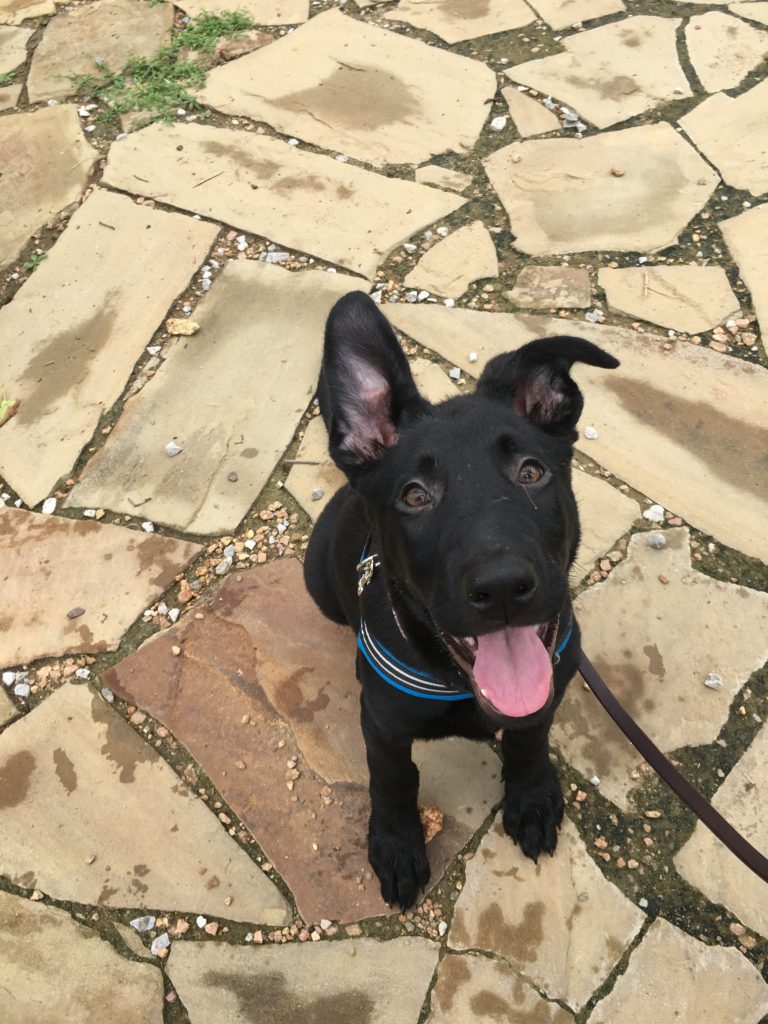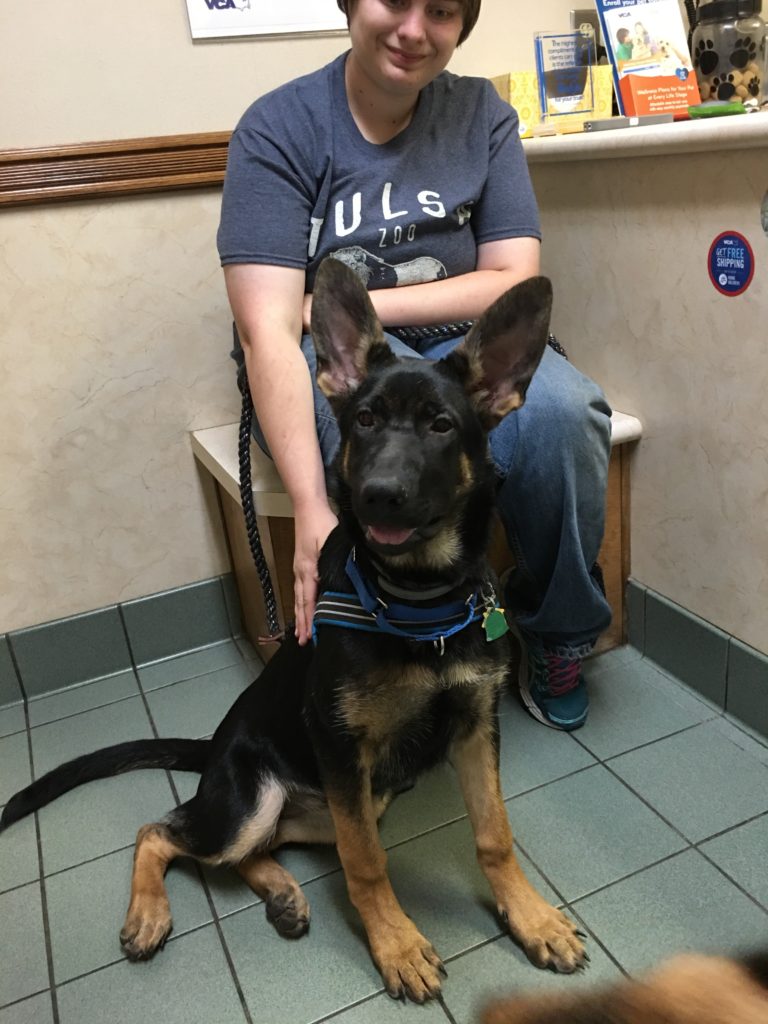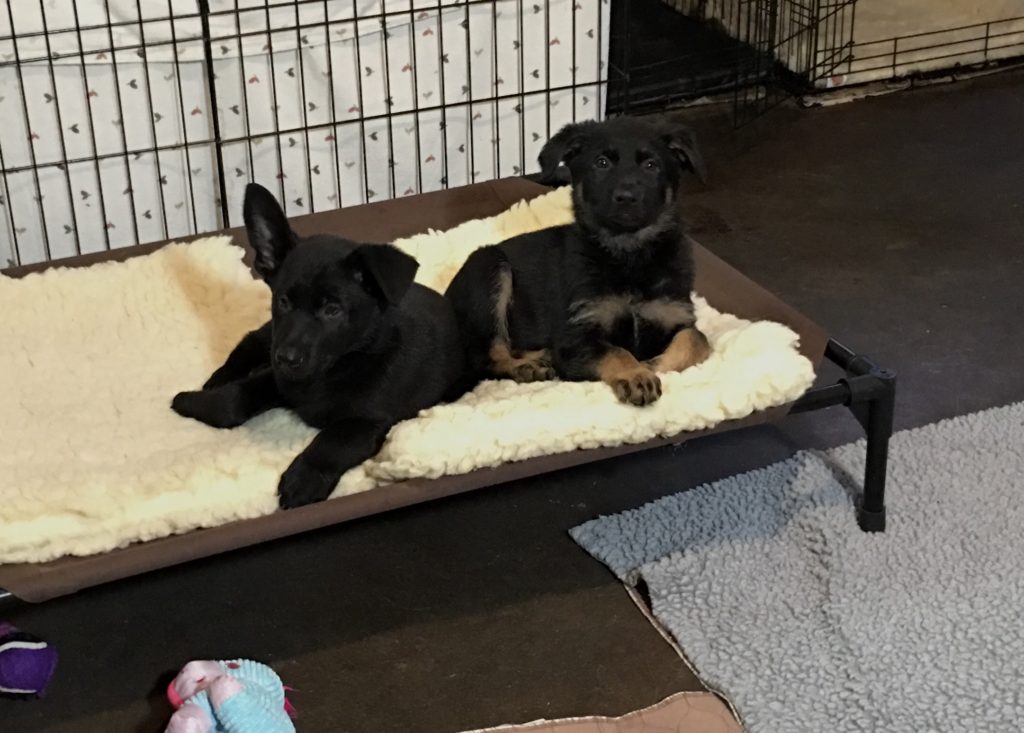Never underestimate the importance of having a shopping list for your new puppy!
Getting a new puppy? Congratulations! Your new family member will need some puppy-specific items to help them settle into their new life with you. Picking these items can be daunting, especially if you’re buying online, or not familiar with the various brands and marketing jargon.
After answering the same questions on puppy supplies over and over, we decided to make a list of our favorite puppy products. Products that we have tried and tested ourselves. Hopefully, you’ll find them just as reliable and useful as we did!
This is made with our clients in mind, so the products are German Shepherd puppy sized, as well as the diet our puppies are used to. So, if you are using this and don’t have an Austerlitz puppy, don’t worry! You may have to double check the sizing of products, and the diet section will be different.
Section 1 – Treats, Dog Food, Chews.
DOG FOOD
Your Austerlitz puppy will come home eating Purina ProPlan Sport, 30/20 Chicken. We recommend feeding this product for at least a month after the puppy comes home, to let your puppy adjust to their new home without also adjusting to a diet change.
No matter who you have a puppy from, it’s important to keep your puppy on the original food the breeder fed for at month, even if you plan on changing the diet. This allows the puppy to adjust to their new home without having the added stress of a new diet. This also will allow you to know more easily if your puppy is having GI upset from a new type of chew or treat, and not having to decide if it’s that OR the new diet you just changed them onto.
Additionally, we find having some canned dog food on hand during transitions is helpful. For stuffing pacifiers, training, or just jazzing up a meal.
TREATS
You will want several types of treats to choose from, ideally purchased before your puppy comes home. It’s very helpful to bring high value treats to pick up your puppy. We want a variety of high value treats, that your puppy will be extremely excited about! Beyond making puppies happier about the transition to your home, it will also be more tempting for puppies who may be nervous and less hungry then normal.
First, think of treats as having an innate value for the dog, based on how tasty they are. High value treats are sometimes a single ingredient such as meat, or very smelly, such as cheese or prepackaged treats. They need to be pea or lima bean sized, and slightly soft. We do not want something very large or very crunchy, such as a MilkBone biscuit.
High value treats can be as simple as cooked chicken breast, cheese, ham dices, or plain meatballs. And honestly, this is the majority of treats we use and recommend. However, having self stable prepackaged dog treats is extremely handy and (ask any parent) variety is extremely exciting.
CHEWS
For puppies, chewing is a need just like play and exercise. Puppies need to develop strong jaw muscles, teeth, and relieve stress – and chewing does all of this! It also gives puppies a calming and innately pleasant way to pass time, which is helpful for crate training.
You’ll want several kinds of chews for your puppy, as variety is the spice of life. We recommend animal body part chews such as bully sticks, ears, horns, hooves, hides, tendons, snouts, and bones. Remember, the below are sized for German Shepherd puppies!
Section 2 – Toys
This is definitely where the fun begins! Toys are a puppy raising staple, and thank goodness for that – they’re very fun to buy!
Toys fall into a few broad categories.
First, there’s chewing type toys. While these are fun to chew, they aren’t edible like the chews listed above. This also means they aren’t particularly exciting – however, they can satisfied chewing urges. Toys in this category are marketing towards chewing, so it’s obvious what they’re for. You’ll want a good assortment of softer, “puppy” toys and harder “adult” toys.
Second, there’s soft toys. These are often for wrestling, squeaking, thrashing, and playing tug. They also are often destroyed, which is less of an issue with baby puppies. They can also be comforting, if puppies are missing littermate snuggles. When picking soft toys, pick something prey-like – remember, puppies are practicing their predatory behaviors when they play, especially when they play with soft, floppy toys. So fuzzy fur, interesting noises, and a good grip surface wins!
Thirdly, we have pacifiers. These are usually hard, plastic or rubber, and designed to have food stuffed or inserted. This includes Kongs, Kibble Nibbles, Squirrel Dudes, and much more. For puppies, we want a modest variety of pacifier toys for confinement training and enrichment. Remember, select ones that don’t have removable parts, seem easy to clean, and are hard enough to resist chewing.
And finally, we have everything else! Balls, discs, throwing sticks, tugs, flirts poles… Oh my! These are specifically for play involving the handler, and shouldn’t be left down all the time.
Section 3 – Collar, Leashes, Harnesses.
COLLARS
For puppies we want a very adjustable, budget friendly collar, as puppies are likely going to go through many collars before they finish growing.
We recommend you have two types of collars, both with ID tags with your current contact information. One flat, non-cinching collar for day-to-day wear. For baby puppies, choose a narrower collar (3/4 inch wide) with a plastic buckle.
The other collar is for outings and walks, and should be a martingale or partial cinch collar. This prevents the puppy from backing out of the collar and escaping. This is common in puppies, especially when their head is smaller than their neck. Choose a martingale collar with a buckle ideally, or adjust it so that you can slip it over their head when fully “open”, but cannot when it’s “cinched”.
LEASHES
It’s not strictly required to get a lightweight puppy leash, but consider it if you have a small breed puppy, or a sensitive puppy.
When choosing a leash, it’s mostly up to your own preferences. Nylon, biothane, leather, and rope all make fine leash materials. But if you have a large dog, look for brass or stainless steel hardware.
We do recommend you get two leashes – one that’s 5 to 6 feet long for regular outings, and one that’s 10 to 15 feet long. The latter is often called a “long line” and this is ideal for walks in controlled settings or in parks. We do recommend getting a waterproof biothane long line if you plan on hiking or getting your puppy wet.
HARNESSES
Harnesses are great for walks and outings, and should be comfortable and very adjustable. They’re also a bit safer than a collar or martingale, as puppies are less likely to escape from one. They also make leash conditioning easier. We know they will likely outgrow a harness or two, so ideally get a budget friendly model if this is a concern. Look for something easy to get on and off, nylon, and lightweight.
Section 4 – Training
Puppies need training, that is pretty much a given. There are a few products that will make your job easier, for sure. First, you will need a few clickers, the type is not super important. However those with volume adjustment tend to break sooner then any other we’ve tried. Button style clickers are the easiest to use, but if you have dexterity issues a cylinder style clicker is something to try. Box style clickers are the default choice, and a good starting point.
You will also benefit from using a bait bag. While you can get a simple nail bag, the bait bags with a hinge closure is very handy, especially for rambunctious puppies. I prefer bags with an included belt, but a clip on style is easier to get on for some people.
Section 5 – Crates and Play Pens
Austerlitz puppies all receive crate conditioning from an early age. You will receive enrollment to our Confident Crating course on how to continue this work. We recommend you start out with two crates, one in your play pen and one in your bedroom for nighttime. See our Management Product Review for a more in depth crate and play pen review.
Section 6 – Odds and Ends
FOOD PREP
For your convenience, think about purchasing something to store pet food in. Make sure it it closes tightly, to prevent accidental meals. Speaking of meals, don’t forget to pick up some food bowls and a 1 cup dry measure.
You will also need some food bowls. I prefer metal, but these are noisy. If you don’t mind some chewing, plastic is fine also. I use a Neater Feeder for my water bowls, this cuts down on mess and spilled water!
TRAVEL
I always keep a few dog items in my car, and they can really help keep a trip calm and orderly. For your first ride home, these items can make a huge difference for your comfort, too!
I keep a basic first aid kit in my car, along with clean up supplies. The clean up supplies are a roll of paper towels, several drawstring kitchen trash bags, poop bags, Wet Wipes, and several Puppy Pads. These can fit neatly into a reusable shopping bag. I throw in a slip lead, an extra flat collar, and seatbelt cutter, the latter being for emergency collar removal. Also be sure to bring a bottle of water and a travel bowl.
While this isn’t an exhaustive list of things you will need for your puppy, this is at least a good starting point. Oh, and congrats on your new puppy!
For more product ideas and lists, visit our Amazon Storefront.
Be sure to like us on FaceBook to keep up with future blogs and breeding program updates.
